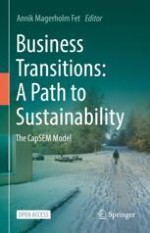11.1 Industrial Ecology
This definition is based on a systems’ view and nature’s carrying capacity. However, there are several definitions of IE (O’Rourke et al. 1996) which consider other objectives such as closed material cycles, evolutionary principles, resiliency, dynamic feedback, cooperation and competition in ecosystems. Industrial Ecology (IE) is the broad umbrella or the framework for thinking about and organizing production and consumption systems in ways that resemble natural ecosystems. This idea considers human societies to be part of and operate within natural ecosystems (Ehrenfeld 1994). The basic concept is to model industrial systems on natural ecosystems. IE aims to interpret and adopt an understanding of the natural system and apply it to the design of the man-made system to achieve a pattern of industrialization that is more efficient and adjusted to the tolerances and characteristics of the natural system. The emphasis is on forms of technology that work with natural systems, not against them. In contrast to industrial production, the natural environment has evolved into an inherently sustainable, cyclical system over billions of years. IE aims to incorporate these cyclical patterns into sustainable designs for industrial production systems. A pattern of change is illustrated by Fig. 11.1 (Jelinski et al. 1992).Industrial ecology is the study of the means by which humanity can deliberately and rationally approach and maintain a desirable carrying capacity, given continued economic, cultural, and technological evolution. The concept requires that an industrial system be viewed not in isolation from its surrounding systems, but in concert with them. It is a systems view in which one seeks to optimize the total materials cycle from virgin material, to finished material, to component, to product, to obsolete product, and to ultimate disposal.
11.2 Implementing Industrial Ecology Principles in Business
Category | |
|---|---|
1: | Balancing industrial input and output to natural ecosystem capacity, hereunder identifying ways that industry can safely interface with nature in a holistic life cycle perspective. |
2: | Dematerialization of industrial output, hereunder striving to decrease materials and energy intensity in industrial production. |
3: | Creating loop-closing industrial practices, hereunder improving the efficiency of industrial processes by re-designing production processes and products for maximum conservation of resources. |
4: | Improving metabolic pathways for materials use and industrial processes, hereunder create industrial ecosystems by fostering cooperation among various industries whereby the waste of one production process becomes the feedstock for another. |
5: | Systematizing patterns of energy use, hereunder development of renewable energy supplies for industrial production, and creating energy system that functions as an integral part of industrial ecosystems. |
6: | Aligning policy to conform with long term industrial system evolution, hereunder adoption of new national and international economic development policies |
11.3 Closing the Loop: Circular Economy
The Circular Economy is an economic model wherein planning, resourcing, procurement, production and reprocessing are designed and managed, as both process and output, to maximize ecosystem functioning and human well-being.
11.4 Material Flow Analysis
11.4.1 MFA Methodology
Term | Definition |
|---|---|
Material | Material stands for both substances and goods |
Substance | In chemistry, a substance is defined as a single type of matter consisting of uniform units. |
Goods | Goods are substances or mixtures of substances that have economic values assigned by markets. |
Process | A process is defined as the transport, transformation, or storage of materials. |
Stock | Stocks are defined as material reservoirs (mass) within the analyzed system, and they have the physical unit of kilograms. A stock is part of a process comprising the mass that is stored within the process. |
Flow and flux | Processes are linked by flows (mass per time) or fluxes (mass per time and cross-section) of materials. Flows/fluxes across systems boundaries are called imports or exports. Flows/fluxes of materials entering a process are named inputs, while those exiting is called outputs |
System | A system comprises a set of material flows, stocks, and processes within a defined boundary |
System boundary | The system boundary is defined in space and time. It can consist of geographical borders (region) or virtual limits (e.g., private households, including processes serving the private household such as transportation, waste collection, and sewer system) |
Substance flow analysis (SFA) | Substance flow analysis (SFA) monitor flows of specific substances (e.g. Cd, Pb, Zn, Hg, N, P, CO2, CFC) that are known for raising particular concerns as regards the environmental and health risks associated with their production and consumption (OECD 2008). |
Material system analysis (MSA) | Material system analysis (MSA) is based on material-specific flow accounts. It focuses on selected raw materials or semi-finished goods at various Levels of detail and application (e.g., cement, paper, iron and steel, copper, plastics, timber, water) and considers life-cycle-wide inputs and outputs. It applies to materials that raise particular concerns as to the sustainability of their use, the security of their supply to the economy, and/or the environmental consequences of their production and consumption. (OECD 2008) |
11.4.2 MFA Applications
Specific environmental problems related to certain impacts per unit flow of: | ||
Ia | Ib | Ic |
Substance | Materials | Products |
e.g., Cd, Cl, Pb, Zn, Hg, N, P, C, CO2, CFC | e.g., wooden products, energy carriers, excavation, biomass, plastics | e.g., diapers, batteries cars |
Problems of environmental concern related to the throughput of: | ||
IIa | IIb | IIc |
Firms/industry | Sector | Region |
e.g., single plants, medium and large companies | e.g., production sectors, chemical industry, construction | e.g., total or main throughput mass flow balance, total material requirement |
